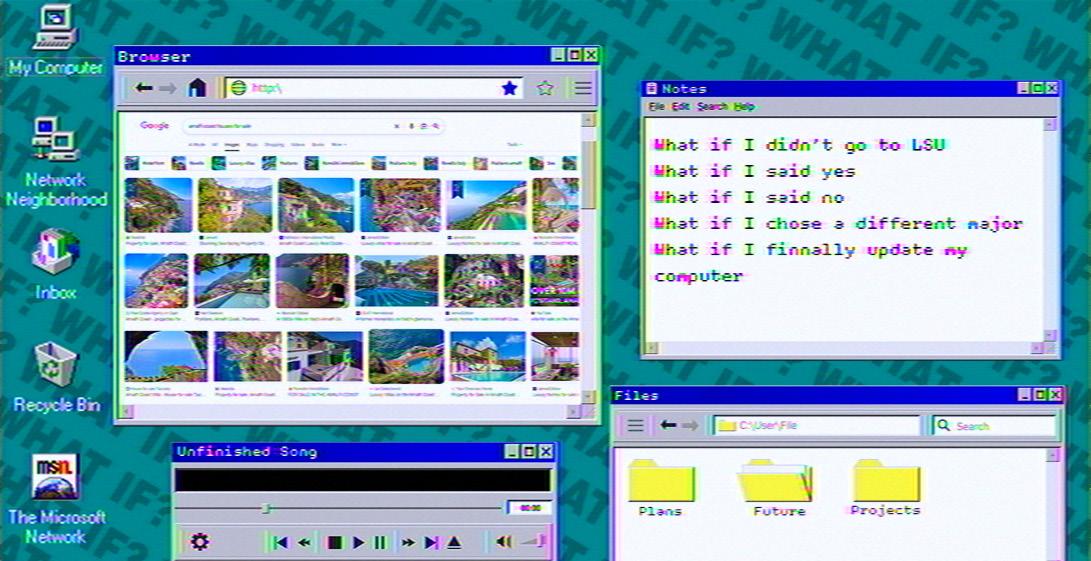




The Bluegrass Miracle was one of LSU’s greatest moments. Quarterback Marcus Randall looks back on how it happened.

Read on page 2
BY ROSS ABBOUD Staff Writer
On Nov. 9, 2002, LSU scored an unthinkable 75-yard touchdown as time expired that decided a thrilling midday matchup between No. 16 LSU and Kentucky. It was one of the most improbable moments in football history.
That play is now known as the Bluegrass Miracle.
The quarterback who heaved the pass that became folklore was Marcus Randall, then a sophomore pushed into the position after starter Matt Mauck suffered an injury.
“I have heard thousands and thousands of people’s stories of how they were watching the game, how they missed it because they got up and thought it was over or how they went crazy in the house,” Randall said. “It’s a real impactful play that people remember where they were, and it brings back memories.”
Randall was a hometown hero, having attended Glen Oaks High School just 20 minutes north of Tiger Stadium.
He went on to win a national championship with LSU in 2003, play in the NFL with the Tennessee Titans and Green Bay Packers and then take the head coaching position at his alma mater in 2019. Recently, he was named the high school’s athletic director.
Randall and his wife Christina are now undergoing a project to compile people’s memories and records of the Bluegrass Miracle through a survey, hoping to enshrine the electric moment. It’ll require fan engagement from the LSU community.
“It will talk about the play, but it also talks about the people and the way they saw it through their eyes and where they were,” Randall said
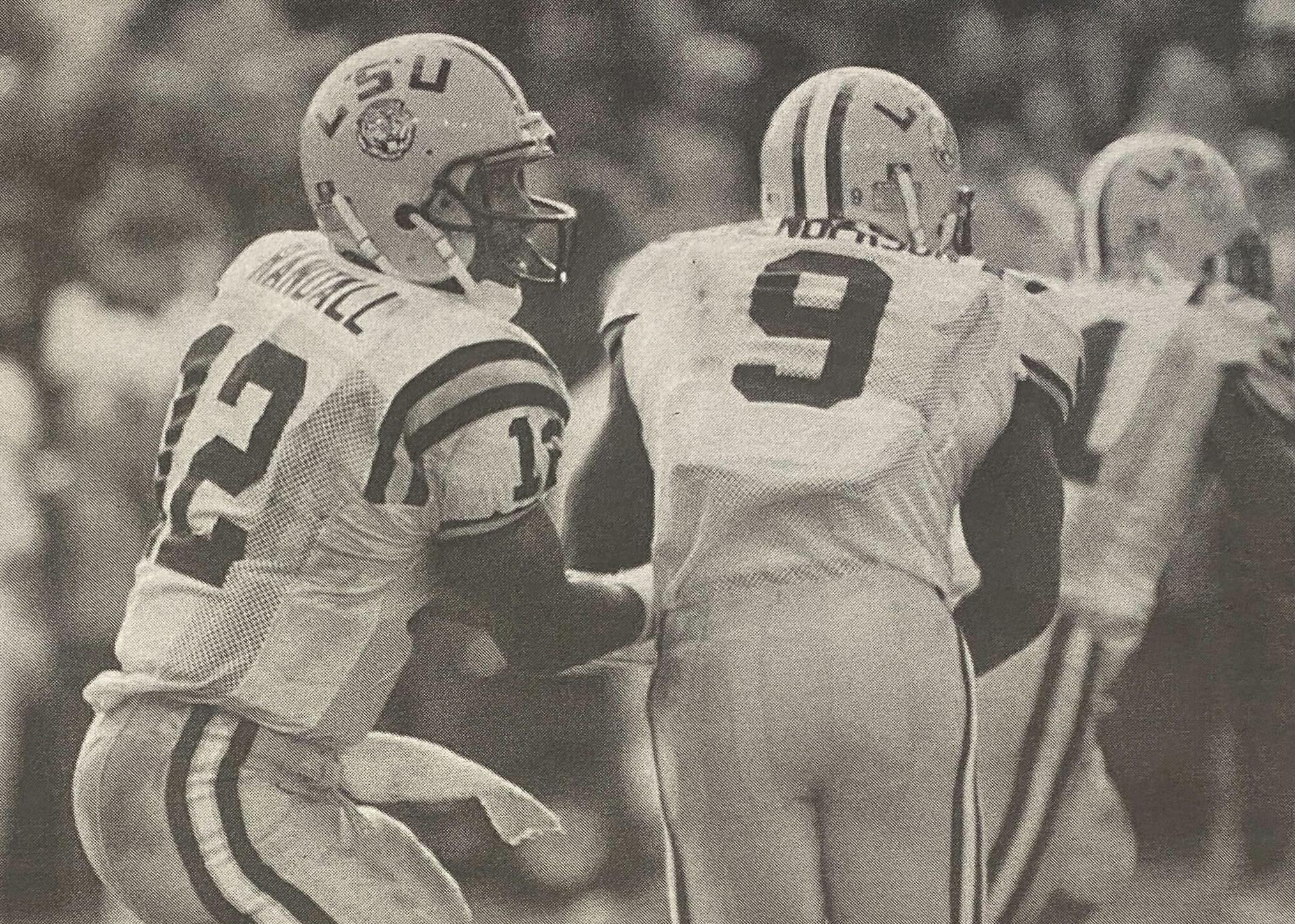
of the project. Randall said people still stop him to ask about the Bluegrass Miracle and share their experience. He remembers it distinctly.
LSU stepped into Kentucky’s stadium in 2002 with a target on its back by being a top-25 team. And as the fourth quarter neared its end, the Wildcats thought that they had pulled an upset.
Kentucky had erased a 14-point lead to tie the game at 27-27 with 2:24 left in the game.
“It was like we were just breaking down, slowly but surely, all the way to the fourth quarter,” Randall
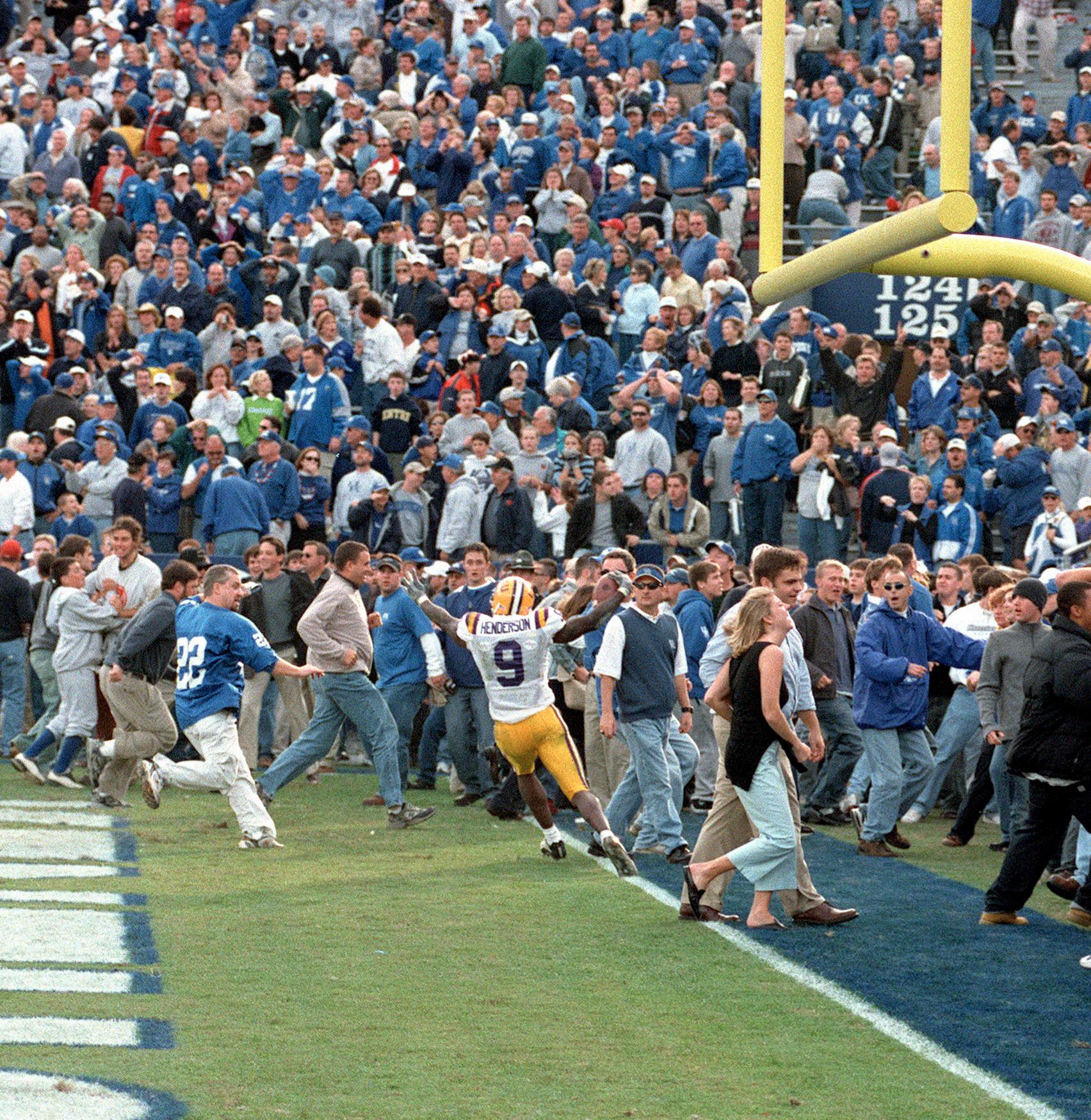
said.
LSU got the ball back after the touchdown, but it couldn’t put anything together on its drive and was forced to punt the ball back to Kentucky.
The Wildcats drove down for a field goal that gave them the lead with 15 seconds on the clock. A victory was a near certainty.
Kentucky then kicked the ball off back to LSU, and future New Orleans Saints wide receiver Devery Henderson was the kick returner who picked up the short kick and ran it out of bounds at the 13-yard line. After a delay of game penalty, LSU was backed all the way up to the 8-yard line.
“Thursdays were our days where we used to always go out, and we’ll practice the two minute drill,” Randall said. “So we knew what plays we’re going to pretty much run, but they would normally be around by the [30-yard line].”
Randall fired a pass over the middle to a wide open Michael Clayton, who quickly caught the ball and got down and called a timeout. After advancing the ball to the 25-yard line, LSU now had two seconds to go 75 more yards.
“Dash right, 93 Berlin,” Randall called in the huddle.
The snap came and Randall rolled out to his right.
“I’m looking for Michael Clayton,” Randall said he was thinking. “He’s our big tip guy, he’s the one that can jump the highest. He normally tips it, and everybody else gets the chance to try to catch it.”
Still, odds were slim at best.
“It never worked in practice, ever,” Randall admitted of the play.
So Randall released the ball, and it flew 50 yards downfield. Around the 20-yard line, the ball



B-16 Hodges Hall Louisiana State University Baton Rouge, La. 70803
was tipped up into the air.
At the 15-yard line, Henderson caught the ball between two defenders. He eluded both and found an untouched path to the endzone.
“From my point of view, I could see that stuff happened, but I can’t fully see that he catches it and actually runs it off into the end zone,” Randall said. “So then I see our whole sideline starts to run into the end zone, and I said ‘Hold on, he caught it and scored it.’”
The moment felt impossible. Kentucky players had already drenched their coach with Gatorade, Wildcat fans had piled onto the sidelines and the clock had been well past zero.
“I’m looking down the field, and I could see their fans hanging from the goal posts already,” Randall recalled. “A lot of the fans already on both sidelines, already ready to rush the field, ready to celebrate out there.”
But what made the moment possible was their mindset heading into the play, Randall said.
“Everybody still gave 110%, and you see Mike Clayton running hard, Reggie Robinson running hard, everyone running hard,” Randall said.
“So we were still preparing to try to win the game in that moment.”
LSU finished the 2002 season 8-5 but brought back 15 starters, building the foundation for LSU’s national championship team in 2003. The key returners were Clayton and Henderson, cornerback Travis Daniels and tackle Andrew Whitworth.
Players like Clayton, Henderson and Randall are legends because of their involvement in the Bluegrass Miracle, which will go down in history as one of the greatest plays in the program’s history.
ADVERTISING (225) 578-6090
Layout/Ad Design ASHLEY KENNEDY
Layout/Ad Design REESE PELLEGRIN
CORRECTIONS & CLARIFICATIONS
The Reveille holds accuracy and objectivity at the highest priority and wants to reassure its readers the reporting and content of the paper meets these standards. This space is reserved to recognize and correct any mistakes that may have been printed in The Daily Reveille. If you would like something corrected or clarified, please contact the editor at (225) 578-4811 or email editor@lsu.edu.
The Reveille is written, edited and produced solely by students of Louisiana State University. The Reveille is an independent entity of the Office of Student Media within the Manship School of Mass Communication. A single issue of The Reveille is free from multiple sites on campus and about 25 sites off campus. To obtain additional copies, please visit the Office of Student Media in B-39 Hodges Hall or email studentmedia@ lsu.edu. The Reveille is published biweekly during the fall, spring and summer semesters, except during holidays and final exams. The Reveille is funded through LSU students’ payments of the Student Media fee.
BY JASON WILLIS Editor in Chief
As LSU plans to build a new state-of-the-art basketball arena that will usurp the PMAC, one of the top bidders to develop the arena has been indicted by the federal government.
On Wednesday, the U.S. Department of Justice announced that Timothy Leiweke, CEO of Oak View Group, was indicted by a grand jury for violating antitrust law and rigging a previous university arena bid process.
Leiweke and Oak View Group built the University of Texas-Austin’s Moody Center to house the university’s basketball teams, but the DOJ said that Leiweke secured the bid by asking a competitor for the contract to step down in exchange for subcontracts.
“The Defendant rigged a bidding process to benefit his own company and deprived a public university and taxpayers of the benefits of competitive bidding,” Assistant Attorney General Abigail Slater of the DOJ’s Antitrust Division said in a statement.
Oak View Group has agreed to pay $15 million in penalties, the DOJ said. Leiweke has also
BR COMMUNITY
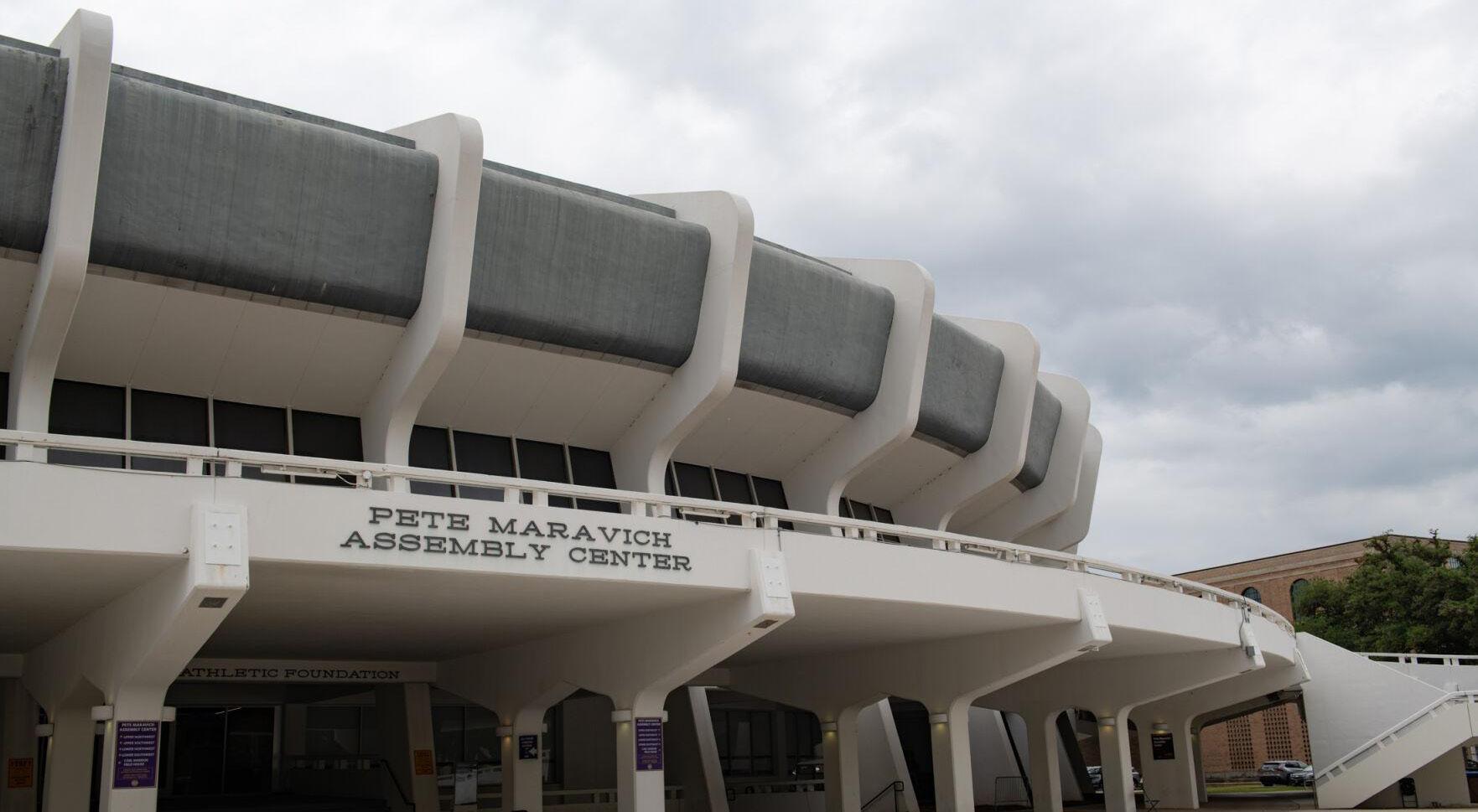
stepped down as the CEO of Oak View Group and is transitioning to vice chair, Variety reported.
Oak View Group was officially awarded the construction project in 2018, and the Moody Center was unveiled in 2019.
It’s unclear as of now how this development will affect LSU’s bid-
ding process for its arena.
“All involved parties are evaluating the implications on the potential arena project in Baton Rouge considering this week’s news regarding Oak View Group,” LSU Athletics said in a statement.
“There is not a finalized agreement in place with Oak View Group, nor
has a potential agreement gone before any governing bodies for approval, including the LSU Board of Supervisors. The future status of the project will be informed by a due diligence review.”
Despite no formal agreement existing, Athletic Director Scott Woodward in May said Oak View
Group was the sole finalist to build LSU’s new arena, according to The Baton Rouge Advocate.
The other finalist prior was ASM Global, which manages the River Center in Baton Rouge and the Caesars Superdome and Smoothie King Center in New Orleans.
The competitor that Leiweke and Oak View Group conspired with was Legends Hospitality, which acquired ASM Global in August (years after its alleged wrongdoing).
Legends Hospitality will also pay $1.5 million in penalties as a result of the indictment, the DOJ said.
The arena’s location isn’t set in stone, but the leading candidate as of now is where the LSU Golf Course is on the corner of Gourrier Avenue and Nicholson Drive, across from the Alex Box Stadium complex.
In other arena news, Our Lady of the Lake hospital, which has a record-breaking partnership with LSU to staff its Student Health Center and athletic medical staff, among other things, is a leading candidate to be the namesake of the arena, according to The Advocate.
BY LIV TEES Staff Writer
Nestled in the quiet nature refuge of LSU’s Rural Life Museum, the Baton Rouge Orchid Society held its 43rd annual show this weekend. The show brought together amateur orchid growers from Texas, Mississippi and Louisiana to compete for the top prize across various categories.
The theme for the show was “Sweltering Summer of Orchids,” fitting Louisiana’s brutally humid and hot climate. The show also had five vendors from the Gulf South selling orchids to anyone interested in starting their plant journey.
With upwards of 20 different award categories, growers competed for first, second and third places. Most growers were after an American Orchid Society (AOS) award, which brings not only local recognition, but national and global recognition as well.
Flowers deserving of this award received a coveted light pink ribbon with the words “considered for AOS award” on it. This means the plant has been submitted to the AOS for consideration.
The Baton Rouge Orchid Society is a non-profit organization focused on bringing orchid lovers together to create a community of flowers and the people who love them. It comprises 120 members ranging from amateurs to seasoned orchid veterans.
Charles Dartez has been a member for four years, and he’s eager to improve his planting abilities.
“When I joined, like most people, I had killed more flowers than I had successfully grown,” Dartez said. “But after a while, I kind of got the hang of it and can keep a couple alive at a time.”
Cultivating orchids is a serious time commitment and investment; on average, it takes seven years from seed to bloom, during which the planter must be aware of factors like light, fertilizing, humidity, watering and temperature.
“I must have killed a million [flowers] on the way,” Dartez said.
One BROS member perfectly summed up the slippery slope that characterizes orchid growers, saying that “you’ll start with one, and then you all of a sudden turn around and have 300.”
According to Dartez, cross
pollination and breeding your own orchid into something new means that you created a new species and have the ability to give it a new official name in accordance with AOS rules.
“All it takes is for one to bloom and then you have everything you need to make your own,” Dartez said.
The show also had a table with the different stages of orchid seed development in clear plastic containers. Showing the life stages of the flowers helps amateur growers understand their plants better.
Jim Morrison, BROS’ president, said the complexities of orchids and their demanding
conditions are why he loves the flower. When he joined the BROS in 2016, he was an amateur and had no idea how the flower worked.
“I found that with some orchid research and patience, I was able to grow and bloom these plants in Baton Rouge,” Morrison said.
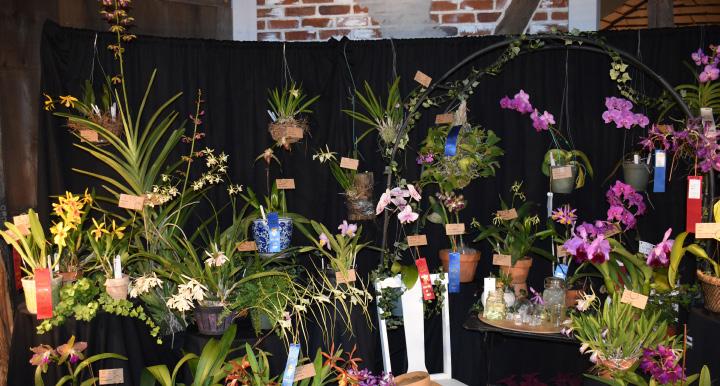


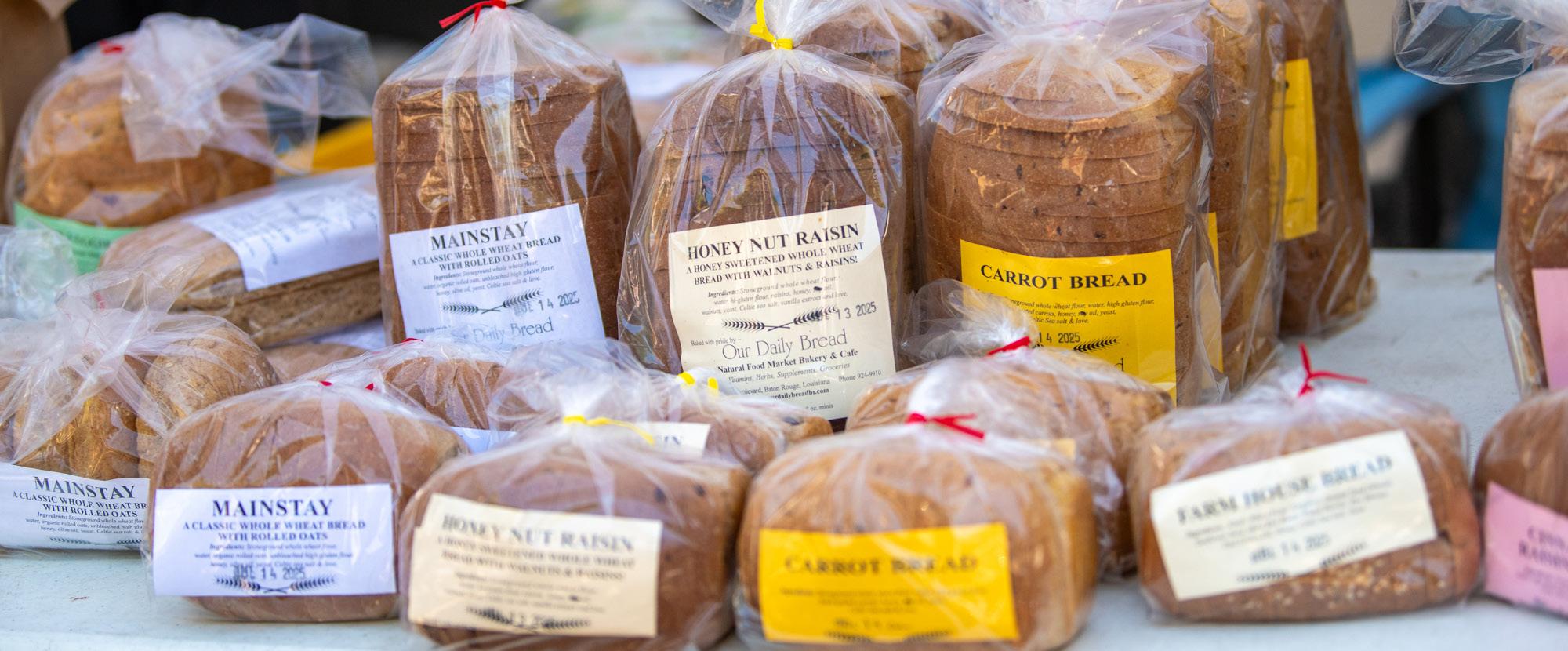

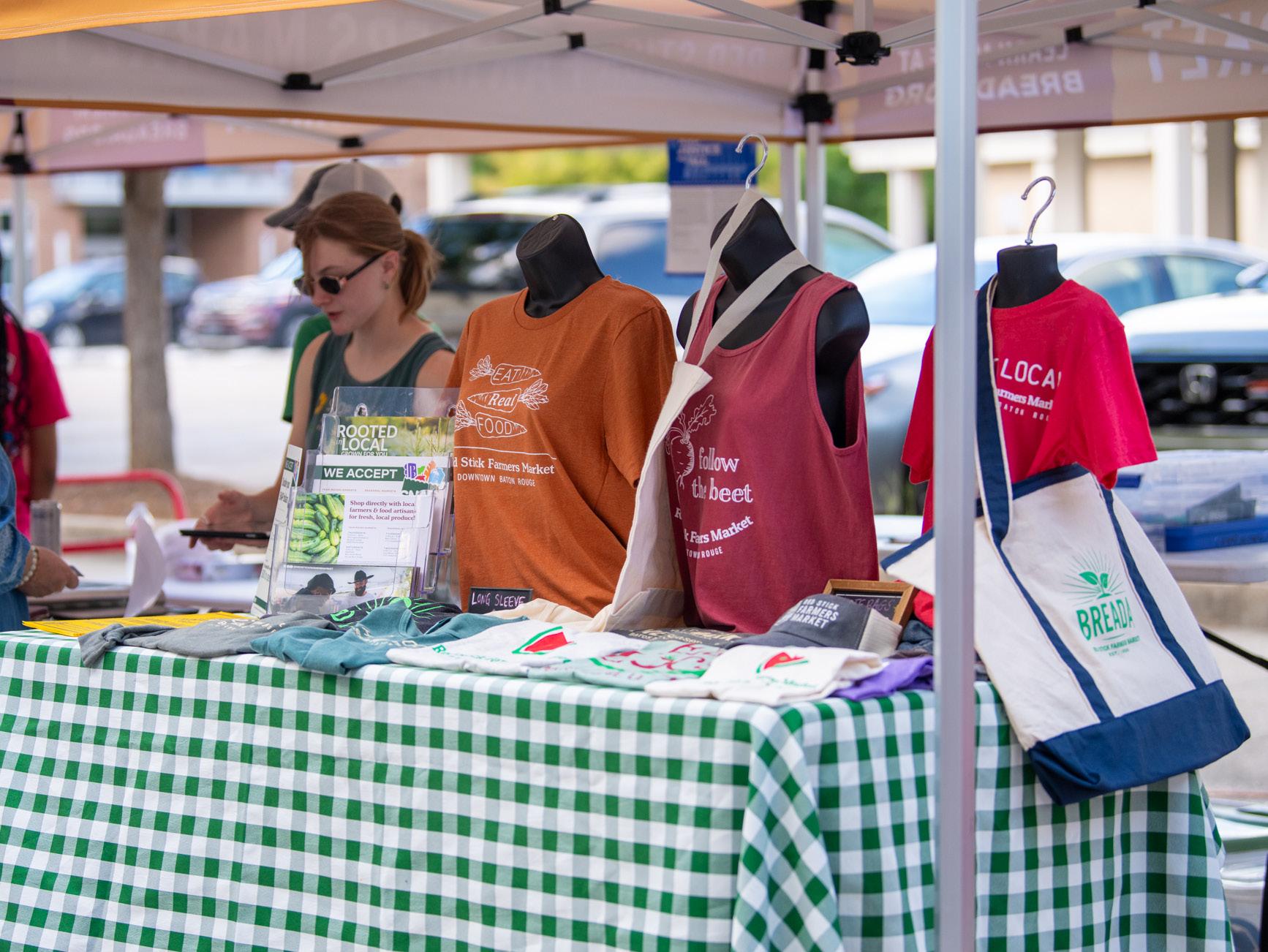

BY ROSS ABBOUD Staff Writer
Nick Saban is one of the best coaches in college football history, known for creating a 17-year dynasty at Alabama. But before his time with the Tide, he was the head coach at LSU.
His departure is one of the most famous “what ifs” in sports, and the question has only been reignited recently after Saban’s June induction into the Louisiana Sports Hall of Fame, the state where he was once revered.
What if Saban stayed at LSU? Would the Tigers be the home to a two-decade long dynasty?
Nick Saban took the head coach position at LSU in November 1999, after a decade of mediocrity where the Tigers went 54-58-1.
Saban went to work quickly, and in 2001 he led LSU to its first conference championship title since 1988. In 2003, Saban took LSU to the mountaintop and claimed a win in the program’s first national championship appearance since 1958.
“After winning a championship here, it seemed like, ‘OK, that’s the standard from now on,” Saban said about his time at LSU at his LSHOF induction. “Prior to that time, they never really thought about winning the national championship.”
But in December 2004, Saban left LSU for the NFL, where he spent three seasons as the head coach of the Miami Dolphins. After two lackluster seasons, Saban was done with the NFL and announced that he was named the head coach at Alabama.
He spent 17 seasons with the Crimson Tide, where he claimed the right to be called one of the best coaches in college football.
Saban won six national championships, and during his time at Alabama, his teams recorded a 3715 record against top-10 opponents. He also claimed nine SEC championships out of his10 title game appearances with the team.
He was able to have so much success on the field because of his consistent ability to recruit. Saban evaluates recruits using his “and” and “but” philosophy.
The philosophy is that players are described by both their strengths and potential drawbacks. For example, a recruit might be praised as a talented player and a team leader, yet another might be labeled as a great athlete but struggles with discipline.
“The ‘ands’ and ‘buts’ are where players on every level define their future,” Saban said.
During Saban’s tenure at Alabama, he produced 47 first round NFL Draft picks. That number from a 17-year stretch would rank 14th all-time out of all programs.
He also had the ability to turn
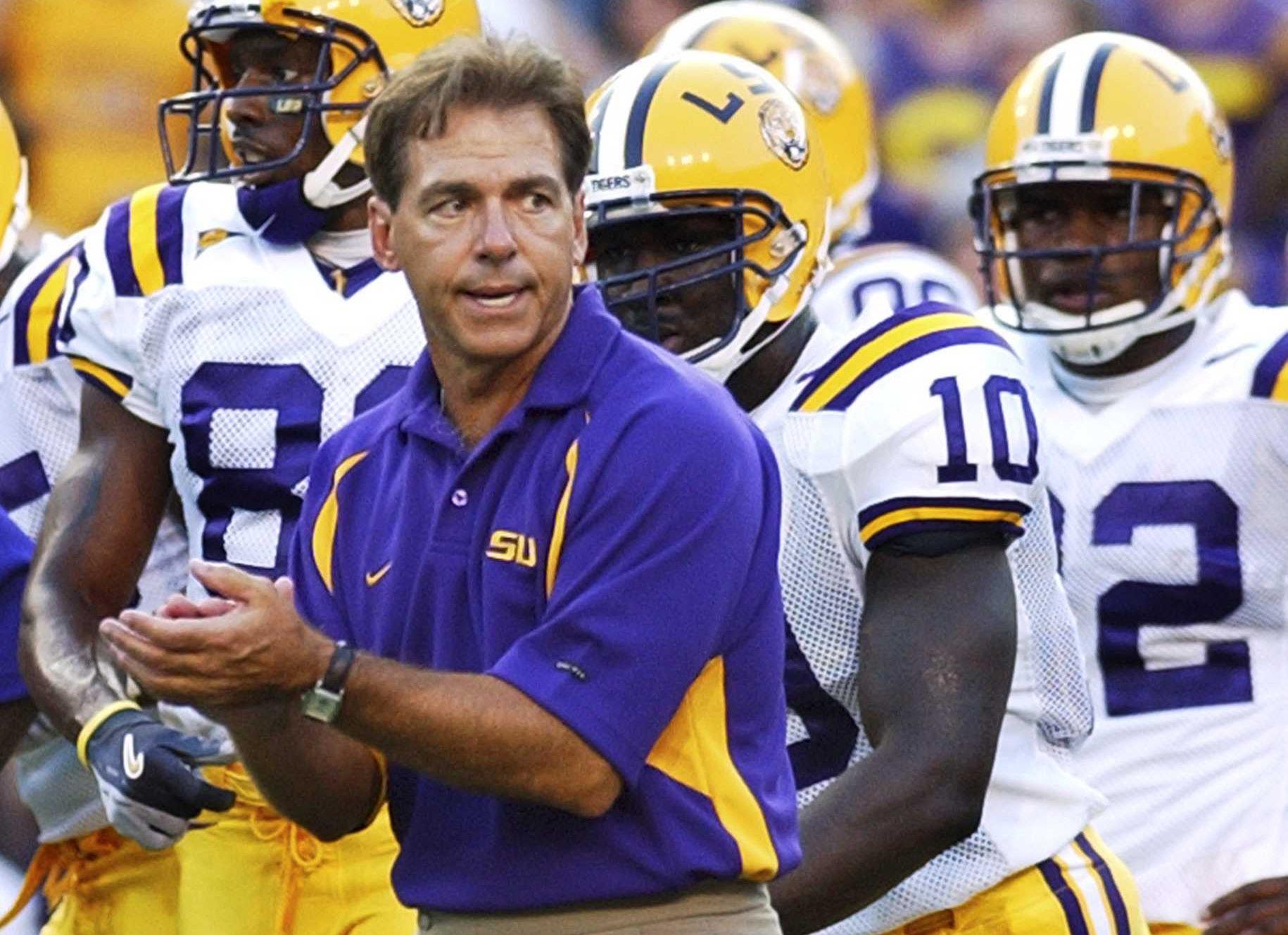
talent into success, which led to a 26-game winning streak during the 2015 and 2016 seasons, five undefeated regular seasons and nine College Football Playoff wins, including three championships during that new era of postseason college football.
Saban reined in nine No. 1 recruiting classes during his time at Alabama, according to 247Sports.
“Don’t make a four-year decision,” Saban said he’d pitch to his recruits, “make a 40-year decision.”
And he delivered on that promise during his career, having sent 133 players to the NFL over his 17year stint at Alabama. He also produced four Heisman Trophy winners.
But that all started when he was at LSU. Saban brought in top25 recruiting classes in every cycle in Baton Rouge, including top-five classes in 2001, 2003 and 2004.
If Saban would have never left LSU, would he have had the same success with unrivaled access to Louisiana’s talent-rich prep football programs?
“Louisiana has really good high school football,” Saban said. “There’s a lot of good football players in the state.”
Studies have shown a significant connection between high school star ratings and NFL draft success. Blue-chip recruits, which are four and five-star players, have a higher probability of being drafted and achieving success in the NFL.
And over the last 20 years, Louisiana ranks fifth nationally in the average number of blue-chip recruits produced yearly. Louisiana also produced the second highest number of blue-chip recruits per 100,000 residents.
Saban would go on to send 22 players to the NFL while at LSU, with the highest draft pick being wide receiver Michael Clayton, who was taken as the 15th pick in the first round in 2004.
Since Saban left, LSU has produced 119 NFL draft picks, compared to 133 drafted under Saban at Alabama in three fewer years.
Before Saban, Louisiana’s best found their way outside the state’s borders. Marshall Faulk went off to San Diego State, Peyton Manning signed with Tennessee and Ed Reed and Reggie Wayne left for Miami. All these players were top targets at their positions in their respective recruiting classes.
But in 2001, Saban changed that, with six of the state’s seven best prospects according to 247Sports signing with the Tigers. Marcus Spears, Marquise Hill, Michael Clayton and Andrew Whitworth were all five-star recruits from Louisiana.
It’s not hard to believe that Saban would’ve been able to generate more NFL players if he stayed at LSU, with the unrivaled access to Louisiana’s talent and undisrupted time to grow what he planted on the recruiting trail in the state.
So with exclusive, convenient access to Louisiana’s talent and the ability to land high-value national recruits, Saban would have had access to better recruits than at Alabama.
There are very few clear advantages in coaching at LSU or Alabama. Both have the same conference schedules and similar athletic budgets. The one difference is in the in-state recruiting.
So if Saban had stayed at LSU, in his 23-year career there, Saban would have likely been able to recreate and perhaps top the success he had at Alabama.
What was LSU’s greatest team ever in 2019 could’ve been the standard of the program, and Jayden Daniels’ Heisman season could be just another trophy added to the trophy case. But more importantly, LSU could be recognized as the premier program nationally, creating NFL talent consistently to cement the NFLSU legacy.
BASEBALL STAFF REPORT
After a thrilling championship season, much of LSU’s anchoring talent will take a step to the next level in the pros.
The MLB Draft is a two-day affair this year, with the first three rounds having shown Sunday on ESPN.
Monday will have the rest through Round 20 starting at 10:30 a.m., only on MLB.com.
Here’s who from LSU was selected on Day 1.
Kade Anderson
Star LSU pitcher Kade Anderson was selected by the Seattle Mariners with the No. 3 overall pick. Though some speculated he could go first overall after his incredible championship run, Anderson landed in Seattle.
The draft-eligible sophomore pitched a 3.18 ERA with a nationleading 180 strikeouts this season.
After a seven-inning start where he allowed just one run to Arkansas and a complete game shutout against Coastal Carolina, Anderson convinced the league he was a topfive pick.
Chase Shores
Shores was the No. 47 overall pick to the Los Angeles Angels and surprisingly the second LSU pitcher taken.
Shores underwent Tommy John surgery in April 2023 that sidelined him for all of the 2024 season. He returned in 2025 as the Sunday starter for LSU, but he transitioned into a high-leverage reliever role after his first nine starts. He embraced the change and became the most reliable reliever for LSU throughout the end of the regular season and especially the postseason.
Shores appeared in four out of five of the games LSU played in the College World Series and recorded the last out on LSU’s path to a national championship in 2025.
Anthony Eyanson
Eyanson, the No. 2 starting pitcher for LSU this year, went off the board in the third round at No.
87 to the Boston Red Sox.
Eyanson had a breakout season at LSU as a junior as he recorded a 12-2 record with a 3.00 ERA in 20 appearances. He pitched 108 innings with 152 strikeouts while limiting his opponents to a .218 batting average.
He was hot to end the season, having pitched 19 straight scoreless innings over five appearances from May 17 to June 8.
Ethan Frey
Breakout LSU star Ethan Frey was drafted with the 95th pick in the MLB Draft by the Boston Red Sox.
Coming off of a surgery, Frey showed out and recorded a .331 batting average as the Tigers’ primary designated hitter this year. He tallied 15 doubles, 13 home runs, 50 RBI and 43 runs scored.
Frey’s a Louisiana native who grew up in Rosepine.
High school signees
LSU had three players who had signed with them out of high school who were drafted on Day 1: shortstop Brady Ebel out of Corona High School in California, outfielder Jaden Fauske out of Nazareth Academy in Illinois and third baseman Quentin Young out of Oak Christians School in California.

LSU baseball sophomore lefthanded pitcher Kade Anderson (32) pitches during LSU’s 4-1 win over Arkansas during the Men’s College World Series June 14 at Charles Schwab Field in Omaha, Neb.
BY ROSS ABBOUD Staff Writer
LSU is home to one of the most notable athletic programs in the nation, so why don’t the Tigers have a clear No. 1 rival?
At first glance, LSU doesn’t have a nationally relevant, mutual rivalry like other powerhouses such as Michigan and Ohio State, Auburn and Alabama or Oklahoma and Texas.
Some sports at LSU have nationally relevant rivalries, but very few have stretched across multiple sports.
For example, LSU football has rivals in Alabama and Ole Miss, but both of those schools have more prominent historical rivals.
LSU baseball has a historic rivalry with Mississippi State, which is usually a top-10 matchup with
RIVALS, page 7
Everything’s coming up Angel Reese.
The Bayou Barbie herself will be gracing the cover of the world’s biggest basketball video game, NBA 2K26, it was announced on Wednesday. On the same day, she announced her first signature shoe with Reebok – and she’s wearing a pair on the 2K cover.
Angel Reese will be on the cover for 2K’s WNBA Edition, which will be available exclusively at GameStop.
Her signature shoes will be called the AR1, and the debut glossy white colorway is known as Diamond Dust.
Since her career at LSU, Reese has been an All-Star in both of her two years with the Chicago Sky. She led the league in rebounding in her rookie season
while setting a single-season rebounding record and is averaging 13.2 points and 12.9 rebounds in Year 2.
At LSU, Reese helped earn the program’s first ever national championship in 2023 after transferring from Maryland. She was a two-time first team All-American and the SEC Player of the Year in 2024. She also holds the record for most double-doubles in a season in NCAA history.
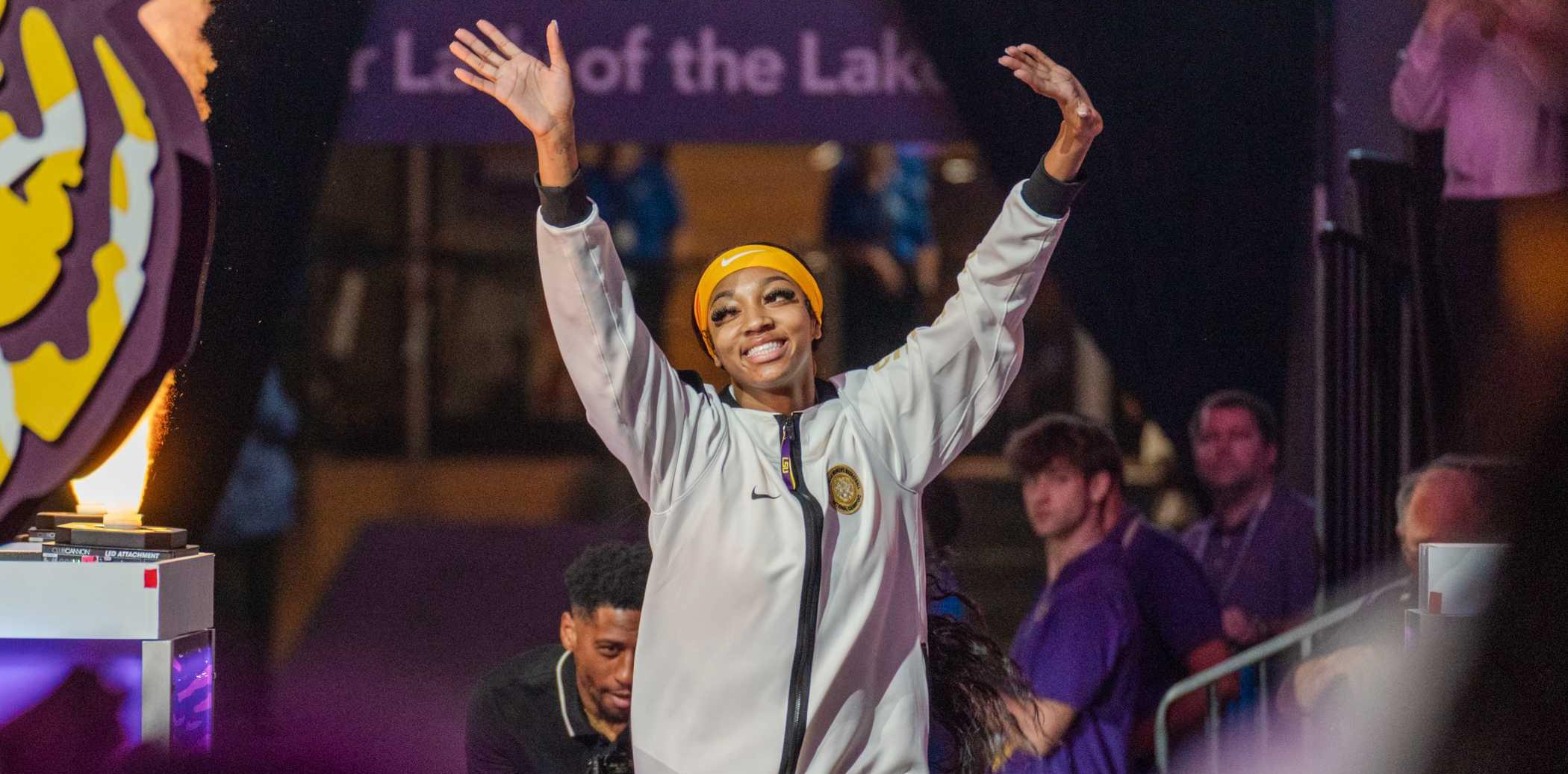
LSU women’s basketball junior forward Angel Reese (10) runs out onto the court Nov. 9 during LSU’s 112-55
over Queens in the Pete Maravich Assembly Center in Baton Rouge, La.
RIVALS, from page 6
postseason consequences.
LSU women’s basketball’s biggest rival is South Carolina, which emerged in 2022 when Kim Mulkey brought major success to LSU and posed a threat to the Gamecocks’ dynasty.
But one of the most prevalent rivals across every sport for LSU is Arkansas.
The Razorbacks are consistent rivals on the football field, the baseball diamond and on the basketball court.
LSU and Arkansas faced off on the football field for the first time in 1901. But in 1992, after Arkansas joined the SEC, an annual matchup started. And then in 1996, the rivalry was cemented when the teams introduced a trophy for the winner called the Golden Boot.
The rivalry has been close, but recently Arkansas has struggled, leading to LSU’s dominance of the matchup.
And in the spring, when baseball starts, LSU fans experience the same rivalry but with even higher stakes.
Both teams have consistently met on the diamond since Arkansas’ entry into the SEC in the 1990s. And when they meet, it’s usually a top-10 matchup with postseason implications.
The rivalry has even made it to the postseason, with the teams meeting in the College World Series four times since 2009. LSU had faced Arkansas two times in
2009, but LSU won both games dominantly to eliminate Arkansas.
But the two teams didn’t meet again in postseason play until 2025. This time the series was much closer. LSU took down Arkansas 1-0 in the first game, then defeated them 6-5 with a walk-off hit to eliminate the Razorbacks.
On the court, LSU men’s basketball is less nationally relevant, but the matchup still has massive SEC implications for the programs. The games on the court are often chippy and competitive.
Despite Arkansas’ up-anddowns in the women’s program, it’s recently found an identity of being fast-paced and lethal from
behind the three point line. Arkansas’ run-and-gun style versus LSU’s defense and rebounding has made for exciting games.
LSU has a historical advantage over the Razorbacks in most sports, but the games are usually hard fought and close.
While the rivalries with other schools like Texas A&M or Florida stretch across the entire athletic department too, the Aggies and Gators have bigger rivalries like Texas and Florida State.
LSU and Arkansas’ rivalry is one of the most prominent rivalries that LSU has across multiple sports. With a dramatic history and lasting relevance, it checks all the boxes of a true rivalry.



AVA’S POV
AVA FRANCIS Columnist
Sometimes I find myself examining my life choices, and I was reminded of something I wrote a few articles ago.
“There comes a time in everyone’s life when making plans comes with a lovely bouquet of what-ifs.”
Life is a bouquet of whatifs, isn’t it? Sometimes, what-ifs keep you up at night pondering what could’ve been. Whatifs force you to think about the course of your life.
Some what- if categories: scholastic what-ifs, dating whatifs, friendship what-ifs, past what-ifs, future what-ifs, etc., etc.
When I think of my own set of what-ifs, here’s a few that come to mind.
What if a global pandemic didn’t break out during my junior year of high school? Would I have still taken my gap year before attending college?
What if I didn’t attend LSU at
all? Would I have been happier at another university?
What if I was a nepo baby? Would I have even gone to college at all, or would I have just jumped right into my dream line of work?
What if I went viral on TikTok? Well, I did, but not viral enough for pop star status.
Clearly, miscellaneous whatifs exist too. I find myself looking at life as one giant puzzle, examining every piece that has led to this current moment.
While I’m beyond grateful for every blessing, I can’t help but wonder what a reimagined version of life would look like.
I doubt I’m alone in this.
There’s someone wishing they could rewind the clock and make a different move in some area. I personally like how my puzzle is coming together, but I’d be lying if certain aspects didn’t stir up questions.
What-ifs are sneaky. One minute your mind is perfectly content with life, the next minute you’re sitting in your bubble bath with a crowded head of –
you guessed it – what-ifs.
Some of the hardest what-ifs to face in this tragic dating economy are what if there’s absolutely no good guys left? What if all the great guys are taken? What if the movies lied and meet cutes aren’t for everyone?
Sometimes I’m right there with my fellow daters wondering if I shouldn’t have cut the cord so fast on certain prospects.
You start to ruminate on certain decisions – “What if you had tossed your standards out the window, gave Bachelor A a chance even though he didn’t check all 30 boxes; but, hey, he thinks you’re hot and funny.” What if that’s enough?
Unfortunately, it’s not. It’s not enough. If that were the case, we’d all have boyfriends.
What if I was born a little earlier? As a millennial, I would have avoided this disastrous dating drought where people lack basic communication skills. Hearting Instagram stories as a primary method of flirting is pointless. Where’s the followup?
Are millennials the last generation of decent conversationalists? Millennials may be cringe, but at least they’re in love.
However, my what-ifs aren’t full of regret, just occasional curiosity. My latest fascination is what if there was a pause button? July is slipping through my fingers, causing seasick feelings to wash over me. Summer is too delightful to drift away this fast.
Therefore, I have a new addition to my what-if collection. What if I run away? What if I book a one way ticket to a land far from life’s responsibilities? I’m thinking maybe the Amalfi Coast.
While never ending gelato and pasta-filled days with boating and basking in the sun is tempting, I’ll save them for postgrad once my diploma is secured.
We have to ask ourselves a major question. Is our list of what-ifs holding us back?
What if we didn’t move? What if we stayed? What if we never met? What if we didn’t go? What if we dated? What if we broke up?
What if we said yes? What if we said no? What if we were never friends?
What if we won? What if we lost?
What if we lied? What if we told the truth?
What if, what if, what if? What if life is just a bouquet of what-ifs?
The what-ifs of life can be hindering. I realize we have to focus on right now.
We don’t want past whatifs to paralyze us from moving forward. What-ifs are like questions we’ll never get answers to. We have to be okay with the possibility of never knowing. After all, some things are better left unsaid.
What-ifs are great reminders to live in the moment, hug your family, laugh with your friends, touch some grass, float and let the waves carry you, say more, say less, say no, say yes, do or don’t.
Be present.
Ava Francis is a 22-year-old journalism major from New Orleans residing in Texas.
